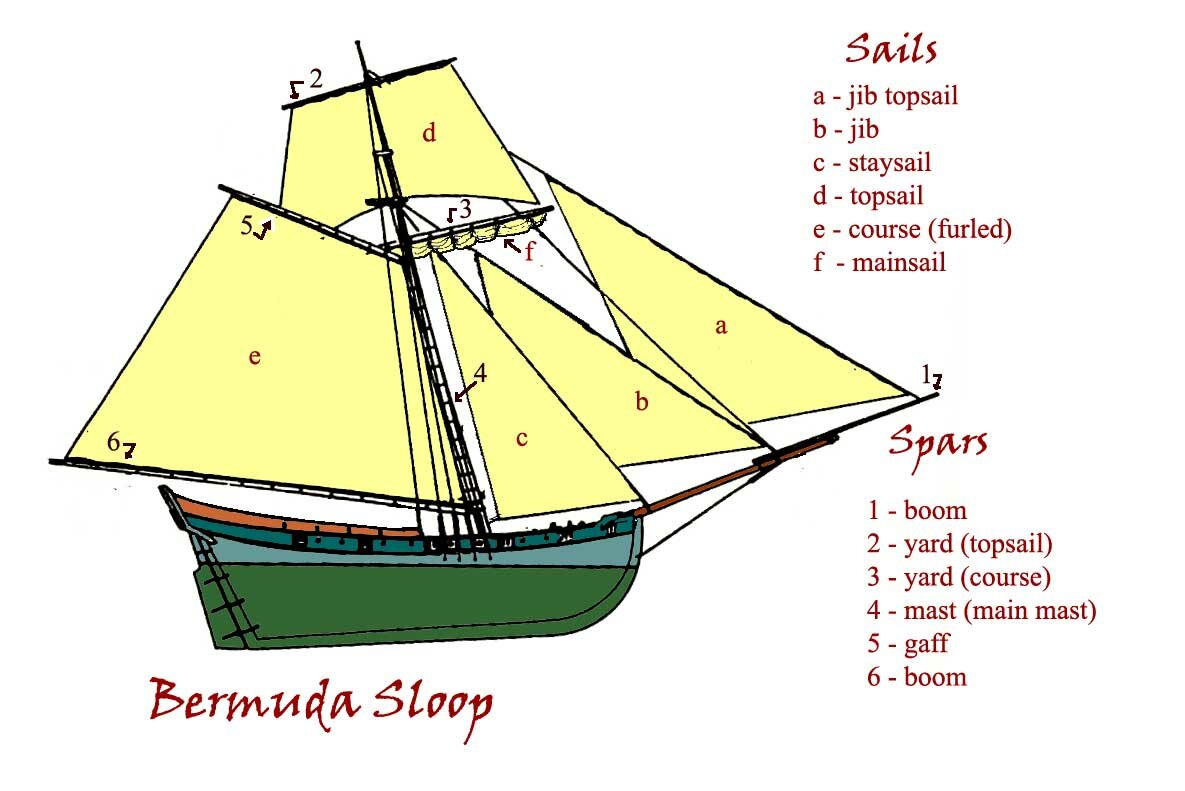Being an overview of sorts on how to turn a "sloop" into a "pirate sloop"
Unlike other ship captains of the time, pirate captains had the ability to modify their vessel as they saw fit. Other sea captains would need to seek permission from the ship's owner or the Admiralty to make a major or sometimes even a minor alteration to the decks, rigging, or other aspects of the ship. This meant that a captain of a merchant or warship may be well aware of critical design feature but would have no choice but to live with it until either the merchant line or Admiralty gave permission to fix it. In some cases, the purpose of the ship would make such a design change impossible.
For instance the numerous chambers in a slave ship was not considered a design flaw of the vessel. It was only a design flaw when the ship was attacked and was found too slow in the water to react or it was near impossible to bring up critical supplies through the maze of slave cells below decks. Or perhaps a fishing sloop might have a large hold in the center that drops through all the decks to the bilge, effectively separating the fore and aft decks on all but the top deck. This purpose built design is ideal for storing large quantities of fish but is not very efficient for a sea rover.
Privateers were often in the fortunate position of having some say in the outfitting of their ship upon signing a Letter of Marque. We often see in the Letter a qualifying statement that reads something like "the Captain will rig and outfit such a vessel as he sees fit for the purpose of waging punitive acts against..." Basically this is the owner giving the privateering captain permission to modify the owners vessel (typically a merchant ship) into a ship of war. The owner may or may not pay for the modifications. If the owner did pay, a privateering captain could expect the cost of the modifications to come out of crew's pocket upon his successful return. This is why you often read that the crews payment will be divided form the what is left over after the payment for refitting, repair, and other ship expenses. Often a privateering captain would go to sail already in debt to the owner.
Most likely as soon as a pirate captain and crew took possession of a ship, they would make quick modifications to make it more effective in battle, perhaps rearranging the guns or adding more guns. Another quick fix would be to throw overboard anything that was in the way or deemed not essential. (If you can't eat it, shoot or sell it, throw it overboard!) This probably would not eliminate a lot of stuff because as it was ships did not carry a lot of needless stuff.
Next might come changes to superstructure. The top deck might have the fo’c’s’le and poop removed or lowered to make it easier to move fore and aft with out dealing with stairs. By doing this the ship's silhouette is lowered giving the pirate ship advantages and disadvantages.
Pirate ship advantages
- The it would be less top heavy and more stable in the water.
- Less weight would improve the draught and increase the speed.
- The ship would not present a smaller target.
Disadvantages
- The captain would lose an observation post from where to direct an engagement.
- To spot another ship first required a man in the riggings at all times. The captain lacked a high perch to see other ships.
- Outward modifications might alert your prey of your intentions long before the Jolly roger was raised.
Other changes might happen only below decks and would not be as noticeable from close observation. The documents state that parts of the superstructure, walls, beams and such would be removed to make a clear run from bow to stern. It is also claimed that reinforcing beams were put where it was deemed the ship's hull might be most vulnerable. Even Defoe's General History discusses such actions being taken. What is certain, is that if a person not knowledgeable about the art of ship building started removing support beams disaster could soon follow. Still it was easy enough to remove partition walls below deck with no worry of weakening a ship. But again such acts had advantages and disadvantages.
For instance the wall slowed movement from compartment to compartment and could splinter if hit by a cannon ball. Those are advantages. A disadvantage would be the same wall might have stopped splinters from flying from one end of the ship to the other. It may also slow the spread of a fire should one break out below deck.
The trade off were usually always out weighed by the fact that such changes meant a faster more maneuverable vessel meant many pirates made the changes. If anything actually convinced a crew not modify their craft it was probably having to make a choice between hard work and rum. It is doubtful a pirate crew would make major changes unless they intended to keep the ship for some length of time.
Obviously keeping the hull careened (Clean of barnacles) was a must but this was done by all sea faring crews as was other routine swabbing and repairs so this is not considered a modification.
Caribbean Merchant Sloop

A modified Caribbean Merchant Sloop is ready to go "Roving"
By removing the aft deck this Bermuda sloop now can carry a larger mainsail. The boom has also been lengthened so that a flying jib could be added. The mast has been shortened a few feet but the yard arms lengthened by a foot or two allowing just a much sail to be hung. This is possible because the deck is "clean" and sloop has an overall lower center of gravity.
The crew has the full run of the top deck allowing free movement during battle. Also by removing the aft deck, the the crew can now carry extra guns. The added guns at the stern help keep the rudder in the water and balance out the lengthened boom.
More about Pirate Ships
Read more articles about the pirate ships, its layouts, sizes, etc.

The only author and editor of all pages on the site. Most of what I write about is based on years of book reading on the topic. My first web page was published back in 1994.